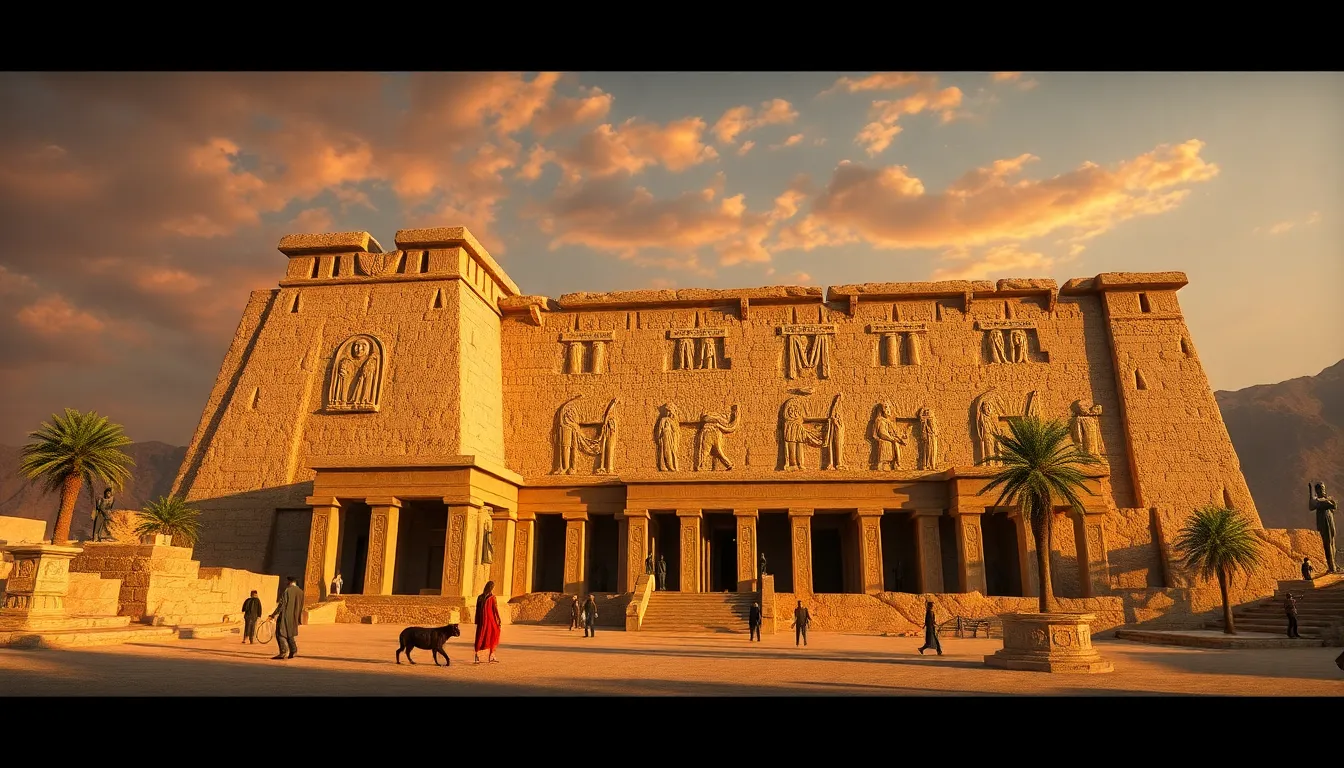The Myths of Pharaoh Snefru’s Architectural Innovations
I. Introduction
Pharaoh Snefru, one of the most intriguing figures in ancient Egyptian history, ruled during the Fourth Dynasty around 2613 to 2589 BCE. His reign is marked by significant advancements in architecture, particularly through the construction of two monumental pyramids. However, the myths surrounding his architectural innovations often overshadow the actual historical significance of his contributions. This article aims to debunk the myths surrounding Snefru’s innovations and provide a clearer picture of his architectural legacy.
II. Historical Context of Pharaoh Snefru
To appreciate Snefru’s contributions, it is essential to understand his historical context. Born to Pharaoh Huni, Snefru ascended to the throne after his father’s reign. His period was characterized by a flourishing culture and political stability, allowing for grand architectural projects.
The Fourth Dynasty is known for its remarkable achievements in pyramid construction, with Snefru playing a pivotal role. As a Pharaoh, Snefru was not only a ruler but also a divine figure whose responsibilities included ensuring the continued favor of the gods through monumental architecture.
III. The Bent Pyramid: Fact vs. Fiction
The Bent Pyramid, located at Dahshur, is perhaps one of Snefru’s most famous architectural endeavors. Its unique design features a change in angle approximately halfway up, giving it a distinctive bent appearance. This has led to various theories regarding its construction.
- Design Intent: Some scholars suggest that the angle shift was a deliberate design choice to symbolize the rays of the sun.
- Construction Challenges: Myths suggest that the builders faced insurmountable challenges, leading to the abrupt change in design. However, evidence indicates that the shift was likely a pragmatic response to structural concerns.
These myths often exaggerate the difficulties faced during construction, failing to recognize the expertise of ancient Egyptian architects and laborers.
IV. The Red Pyramid: A Revolutionary Step
The Red Pyramid, also located at Dahshur, is considered the first successful true pyramid and marks a significant advancement in pyramid construction. Its smooth sides and uniform angle represent a shift towards what we recognize as the classic pyramid shape.
- Architectural Features: The Red Pyramid stands at 104 meters tall, constructed primarily of limestone, which gives it its reddish hue.
- Construction Misconceptions: Many myths suggest that the construction of the Red Pyramid was entirely experimental; in truth, it built upon the lessons learned from the Bent Pyramid.
This pyramid is crucial in understanding the evolution of pyramid design, serving as a template for future constructions, including those of Snefru’s successors.
V. Innovations in Construction Techniques
While Snefru is often credited with innovations in construction techniques, it is vital to differentiate between traditional methods and purported advancements during his reign.
- Traditional Methods: The ancient Egyptians used a combination of skilled labor, ramps, and simple tools.
- Innovative Claims: Some claims suggest that Snefru introduced new tools or methods; however, archaeological evidence suggests that existing techniques were refined rather than completely overhauled.
These construction methods laid the groundwork for future architectural achievements, influencing generations of builders and architects in ancient Egypt.
VI. Snefru’s Influence on Future Pharaohs
Snefru’s architectural choices significantly impacted subsequent Pharaohs and their building projects. His pioneering work set a standard for grandeur and design that would be emulated by later rulers.
- Father of Pyramid Building: While Snefru is often referred to as the “father of pyramid building,” this title oversimplifies the collaborative nature of architectural advancement in ancient Egypt.
- Legacy: His innovations inspired rulers like Khufu and Khafre, who continued to build upon his architectural foundations, culminating in the iconic pyramids of Giza.
The legacy of Snefru’s innovations is evident in the grandeur of the later pyramids, which reflect his influence and the evolving architectural practices of the time.
VII. Archaeological Discoveries: Supporting Evidence or Myths?
Recent archaeological discoveries have shed light on the truths and myths surrounding Snefru’s reign. Excavations at Dahshur and other sites have provided valuable insights into the construction techniques and workforce.
- Modern Technology: The use of ground-penetrating radar and other technologies has revealed hidden structures and provided evidence of construction methods.
- Interpreting Data: Archaeologists face challenges in interpreting the data, as myths and historical facts often intertwine, complicating the narrative.
These discoveries continue to enhance our understanding of Snefru’s reign and the architectural practices of ancient Egypt.
VIII. Conclusion
In summary, Pharaoh Snefru’s reign marked a pivotal moment in ancient Egyptian architecture, characterized by the construction of the Bent and Red Pyramids. While myths abound regarding his innovations, a closer examination reveals a ruler who built upon existing knowledge and practices.
Understanding the distinction between fact and myth is crucial in appreciating the true legacy of Snefru. His contributions laid the groundwork for future architectural endeavors and shaped the course of ancient Egyptian history.
Ultimately, Pharaoh Snefru’s architectural innovations reflect not just individual brilliance but the collective advancements of a civilization that prioritized monumental construction as a means of expressing divine connection and political power.




